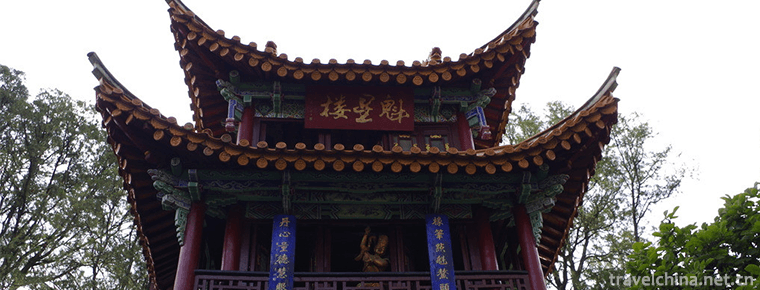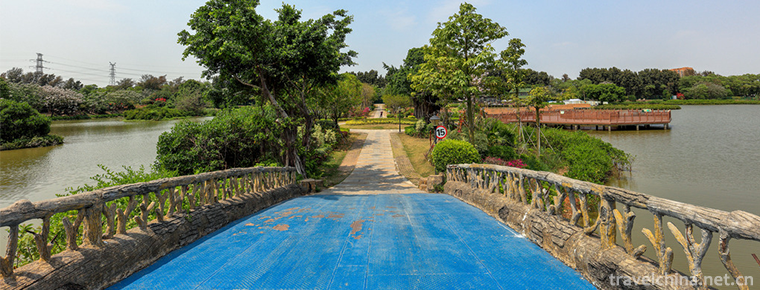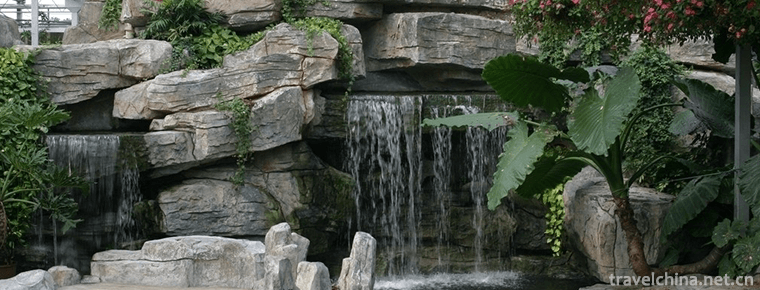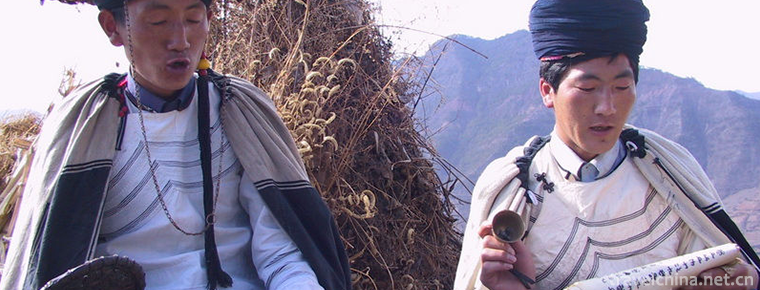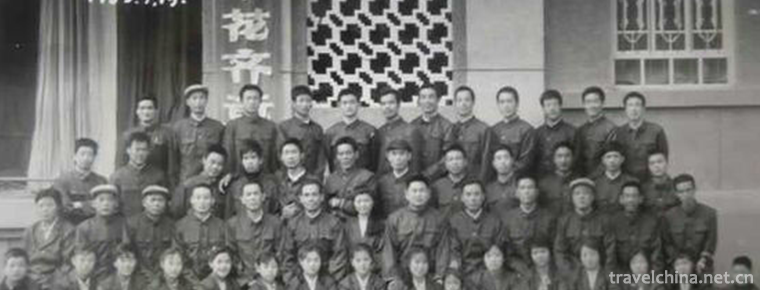Shanghai Baoshan International Folk Art Exhibition Hall
Shanghai Baoshan International Folk Art Exhibition Hall is the first exhibition, research and protection of intangible cultural heritage in Shanghai constructed by Shanghai University in cooperation with Baoshan Government. It is also the largest exhibition hall of intangible cultural heritage in the world in China. Shanghai Baoshan International Folk Art Exhibition Hall is located at Gate 1 of Gucun Park at the junction of Shanghai-Tai Road and Outer Ring Road, with a building area of 14600 square meters. The architectural design concept of the Expo Hall is derived from the folk cultural image of "Chinese knot". Its overall layout is an integral whole, which is a true "cultural Grand View garden".
building structure
Shanghai Baoshan International Folk Art Exhibition Hall is a two-storey building structure. The first floor exhibition hall covers an area of about 3000 square meters, with a total of eight exhibition halls. "Preface Hall" mainly displays the dragon boat of Luodian in Baoshan and the traditional folk culture elements in this area; and "Sea Baoshan Hall" is divided into four units. The first unit takes "Dragon Boat Race" as the scene, vividly demonstrates and reproduces the history of dragon boat culture and the lively competition scene of Shanghai Baoshan Dragon Boat Festival. The second unit takes "Wanjia Lantern" as the line, and clearly outlines the development process of Baoshan Folk Lantern art. The third unit takes "Talking and Singing Baoshan" as the point, comprehensively introduces the local culture such as folk entertainment and rap deeply rooted in Baoshan's native land; the fourth unit takes "Colorful Art Festival" as the color, carefully decorates the beautiful picture scrolls of the six Baoshan International Folk Art Festival. "China Hall" also has four sketches. "Shili Red Makeup" conveys Chinese traditional wedding culture, "opera interpretation" interprets Chinese traditional opera in the form of multi-media, "local voice is difficult to change" shows the characteristics of Chinese local languages and ethnic groups, "Manchu and Han Full Seat" takes solar terms as the axis, linking up to show the Chinese traditional diet culture and exquisite production technology.
"Asia-Pacific, Africa, Middle East, Latin America, Europe and the United States" and other five exhibition halls vividly show the culture of five continents and the customs of the four seas. There is a multi-functional hall and two indoor courtyards on the first floor of the Expo Hall. It is understood that this area can be used as a temporary exhibition hall in the future to hold art exhibitions with specific themes, as well as for small-scale performances or international activities. There are also six temporary exhibition halls on the second floor of the Expo Hall, which are connected by a T-shaped corridor. They are mainly used for holding various thematic exhibitions. There are also glass, ceramics and weaving workshops in the museum, which will become the research and teaching base of International Folk art. The museum also has Research Institute studios, laboratory classrooms, projection halls (lecture halls) and other functional areas, as well as open-air theatres, open-air exhibition areas and other outdoor venues.
Influence
Shanghai Baoshan International Folk Art Exhibition Hall is a public welfare cultural facility integrating collection, exhibition, exchange, research and social service functions, and devotes itself to the exhibition and exchange of Chinese and foreign folk art. It combines with Baoshan International Folk Art Festival to carry out multicultural activities, and it has become a window for Baoshan's external exchange, Shanghai intangible cultural heritage protection and research center. Shanghai Baoshan International Folk Art Festival is a large-scale activity center. The Expo Hall has been listed in the list of China's intangible cultural heritage which has been officially promulgated and protected. It focuses on Shanghai's intangible cultural heritage projects, supplements international folk art exchanges and exhibitions, and highlights the splendor of multiculturalism. After the opening of the museum, Shanghai University and Baoshan District cooperated closely to strengthen exchanges in the research, protection, development and reuse of intangible culture and make contributions to folk culture and art.
Tourist guide
The opening time of Shanghai Baoshan International Folk Art Expo is from 9:00 to 16:00 every Tuesday to Sunday, and it is closed on Monday. With the approval of the price department of Baoshan District, the ticket price of Shanghai Baoshan International Folk Art Exhibition Hall is 30 yuan per person. Ticket price preferential measures in accordance with the "Shanghai Tourist Visiting Points Ticket Price Management Measures": for children under 1.2 meters, active servicemen, disabled soldiers, family members of martyrs, retired cadres, the elderly over 70 years old, disabled persons to exempt tickets; students with student certificates (student ID card) 15 yuan per person.
In September 2015, at the initiative of China Tourist Scenic Area Association, Shanghai Baoshan International Folk Art Exhibition Museum signed the promise of "no increase in ticket prices".
service content
In addition to the explanation service, the museum also has a digital language guide system. After debugging, it can introduce the exhibits in Chinese and English, as well as in French, Japanese and Spanish. As long as you press the button and input the code, you can hear what you need to explain.
Mailbox, Wifi Internet access, coin phone, wheelchair crutches and other convenient services are also set up in the service area.
In addition, the museum also provides visitors with consultation, goods storage, parking and other services.

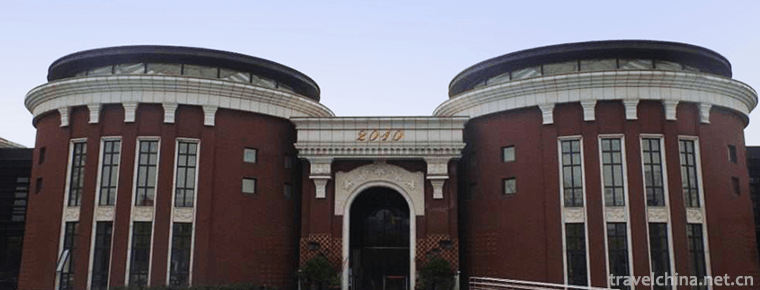
-
Noodles with Soy Bean PasteBeijing Style
Old Beijing fried noodles, a traditional Chinese pasta, made from dishes, fried sauce mixed noodles, popular in Beijing, Hebei, Tianjin and other places..
Views: 230 Time 2018-10-27 -
Conch Valley Scenic Area Hailuogou
Hailuogou is located in Moxi Town, Luding County, Sichuan Province, on the eastern slope of Gongga Mountain. It is a very high mountain area on the eastern edge of the Qinghai-Tibet Plateau. Located a.
Views: 92 Time 2019-01-13 -
Jindian Scenic Spot
Kunming Golden Palace Scenic Spot, also known as Tongwa Temple, is made of brass and shines in the sunshine, reflecting the golden brilliance of Cuigou Youlin.
Views: 160 Time 2019-01-22 -
Luliang Colorful Sand Forest
Luliang color sand forest is a national AAAA tourist area, 18 kilometers away from Luliang County. 108 named scenic spots are located in the "Y" shaped canyon, with a total area of 180 hecta.
Views: 132 Time 2019-02-06 -
Shenzhen Maritime Pastoral
Shenzhen Maritime Pastoral Tourist Area is administratively located in Shajing Street, Baoan District, Shenzhen City. It is located at the eastern port of Pearl River estuary.
Views: 199 Time 2019-02-08 -
Tengtou Ecological Tourism Area
Embedded between Fenghua and Xikou, Tengtou Eco-tourism Area is located in Xiaojiang Plain, close to Jiangba and Yongxi Highway. Located 6 kilometers north of Fenghua City.
Views: 229 Time 2019-02-13 -
Bemo music
Qubila fire is well known in Meigu County, Liangshan Prefecture. He is not only a highly respected Yi Dabimo, but also a representative successor of national intangible cultural heritage projects..
Views: 302 Time 2019-04-04 -
Construction Techniques of Li Nationalitys Ship type House
The carrier of the excellent architectural skills of the Li nationality will inevitably fade out of sight in the fierce collision between traditional civilization and modern civilization. Today only a.
Views: 260 Time 2019-05-12 -
Sun Bin quan
Sun Bin Quan is an ancient and rare traditional boxing in Shandong Province. Its connotation is broad and profound, which was created by Sun Bin, a military strategist in the Spring and Autumn Period .
Views: 162 Time 2019-06-17 -
Yongnian Western Dialect
Yongnian Western Dialogue is an independent drama formed after Shangdang Bangzi of Shanxi was introduced into Yongnian. During the period of Xianfeng in Qing Dynasty, Shangdang Bangzi was introduced i.
Views: 158 Time 2019-07-14 -
University of International Relations
University of International Relations (University of International Relations), referred to as "Guo Guan", is located in the western suburb of Beijing. Ministry of Education of the People's R.
Views: 381 Time 2019-09-22 -
Honorary title of Mianyang
National system to promote comprehensive innovation reform pilot area.
Views: 331 Time 2020-12-14


